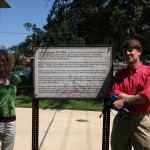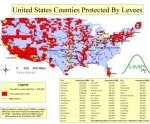As 2009 drew to a close, many articles covered the most memorable events of the past decade. Naturally, they all included the metro New Orleans flood.
But the former chief of Gannett’s Capitol Bureau speaking to the Alexandra Town Talk stands out and gets a “seal of approval” from Levees.org for accurately describing the August 2005 flooding.
While discussing the effect of recent hurricanes on Louisiana, John Hill is quoted as saying,
“…absent the Noah-like flooding of New Orleans because of levee failures, Katrina would have taken second place to Rita.”
Hill resisted using inaccurate harmful Katrina ‘shorthand’ and saying ‘Katrina flooded New Orleans.’ That would be like saying traffic broke the I-35 bridge in Minneapolis. Both the traffic and Katrina exposed structural flaws. Both revealed blatant civil engineering mistakes.
John McQuaid co-author of Path of Destruction (with Mark Schleifstein) has observed this is more than a matter of semantics. Says McQuaid, using Katrina as ‘shorthand’ and its association with a natural disaster is confusing because it implies “what the heck are those people doing living down there?”
The flooding of metro New Orleans was a civil engineering failure, the worst in the world since Chernobyl according to Dr. Ray Seed, co chair of the Independent Levee Investigation Team, University of California Berkeley.
And responsibility for the failures belongs overwhelmingly and primarily to the federal Army Corps of Engineers.







